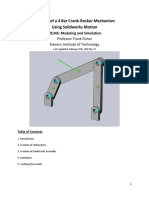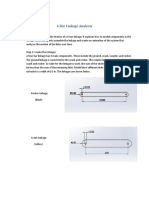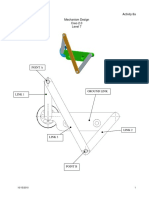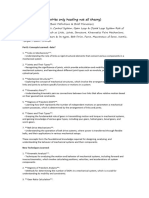0% found this document useful (0 votes)
57 views2 pagesSolidWorks Mechanism Report
The document details the design and application of a four-bar linkage mechanism using SolidWorks, highlighting its use in robotic arms and other machinery. It outlines the tools and techniques employed for part modeling, assembly, and the challenges faced during the process, along with solutions implemented to address them. The mechanism's functionality was validated through simulation in the SolidWorks environment.
Uploaded by
marcwanyangu07Copyright
© © All Rights Reserved
We take content rights seriously. If you suspect this is your content, claim it here.
Available Formats
Download as PDF, TXT or read online on Scribd
0% found this document useful (0 votes)
57 views2 pagesSolidWorks Mechanism Report
The document details the design and application of a four-bar linkage mechanism using SolidWorks, highlighting its use in robotic arms and other machinery. It outlines the tools and techniques employed for part modeling, assembly, and the challenges faced during the process, along with solutions implemented to address them. The mechanism's functionality was validated through simulation in the SolidWorks environment.
Uploaded by
marcwanyangu07Copyright
© © All Rights Reserved
We take content rights seriously. If you suspect this is your content, claim it here.
Available Formats
Download as PDF, TXT or read online on Scribd
/ 2
























































